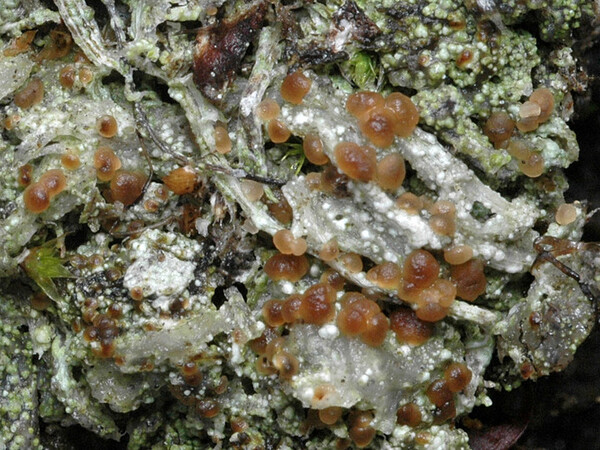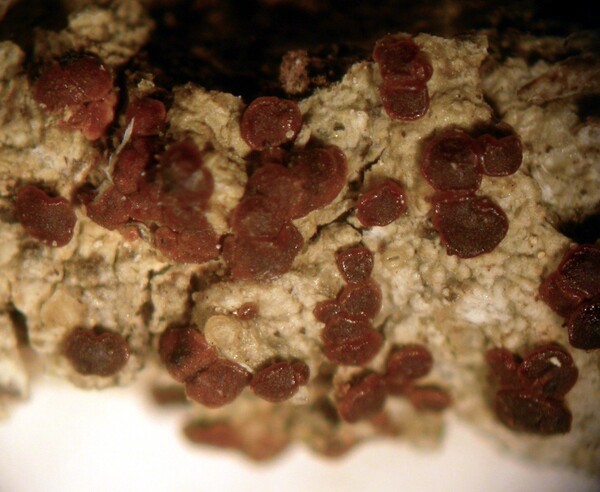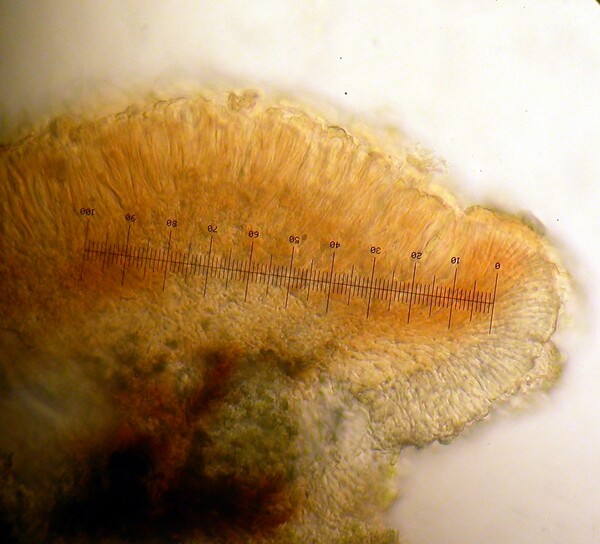Biatora subduplex (Nyl.) Printzen
Räsänen ex Printzen, Bibl. Lichenol., 60: 123, 1995. Basionym: Lecidea vernalis f. subduplex Nyl. - Lich. Scand., 201, 1861.
Synonyms: Biatora subduplex (Nyl.) Räsänen comb. inval.; Biatora vernalis f. subduplex (Nyl.) Arnold; Bilimbia sphaeroides var. subduplex (Nyl.) Branth; Catillaria subduplex (Nyl.) H. Olivier; Lecidea apochroeiza Nyl.; Lecidea internectens Nyl.; Lecidea subduplex (Nyl.) Nyl.
Distribution: N - Frl (Arnold Lich. Exs. 835: Printzen 1995), TAA (Printzen 1995, Nascimbene & al. 2007b, 2022), Lomb (Anzi Lich. Lang. 179: Printzen 1995), Piem (Isocrono & al. 2004, Matteucci & al. 2015b), VA (Matteucci & Vanacore Falco 2015), Lig (TSB 34008). C - Tosc (Benesperi & al. 2007).
Description: Thallus crustose, episubstratic, whitish grey, greenish grey or pale ochre, continuous, rimose or areolate, forming up to 5 cm wide patches, the areoles 0.15-0.55 mm wide, irregular in outline, the margins often crenulate or slightly raised. Apothecia biatorine, sessile and constricted at base, orange-brown to red-brown, 0.2-0.7(-1.5) mm across, with an initially flat, then strongly convex and sometimes tuberculate disc and a paler, thin, smooth, soon excluded proper margin. Proper exciple 25-80(-100) µm wide laterally, colourless in outer part, pale brown within, of radiating hyphae with angular-elongate, 1-2.5 µm wide lumina; epithecium scarcely differentiated from the hymenium, colourless to very pale brown; hymenium colourless, yellowish or brownish, 35-60 µm high; paraphyses coherent, simple or sparingly branched, 1-1.5 µm thick at mid-level, the apical cells to 4 µm wide; subhymenium distinct, 20-95 µm high; hypothecium yellowish or brownish, 35-200(-300) µm high. Asci 8-spored, clavate, thick-walled, the outer wall weakly I+ reddish, Biatora-type. Ascospores 1-celled (rarely 1-septate), hyaline, ellipsoid, (8-)10-15(-21) x 3-5(-6) µm, with a thin perispore. Photobiont chlorococcoid. Spot tests: thallus K-, C-, KC-, P-, UV-. Chemistry: without lichen substances.Note: one of the commonest Biatora-species in the Alps, especially on plant remains and on basal parts of subalpine shrubs, overlooked, and certainly more widespread in the Alps, and also known from the northern Apennines. See also notes on B. cuprea and B. vernalis.
Growth form: Crustose
Substrata: bark, soil, terricolous mosses, and plant debris
Photobiont: green algae other than Trentepohlia
Reproductive strategy: mainly sexual
Commonnes-rarity: (info)
Alpine belt: rather common
Subalpine belt: very common
Oromediterranean belt: absent
Montane belt: very rare
Submediterranean belt: absent
Padanian area: absent
Humid submediterranean belt: absent
Humid mediterranean belt: absent
Dry mediterranean belt: absent
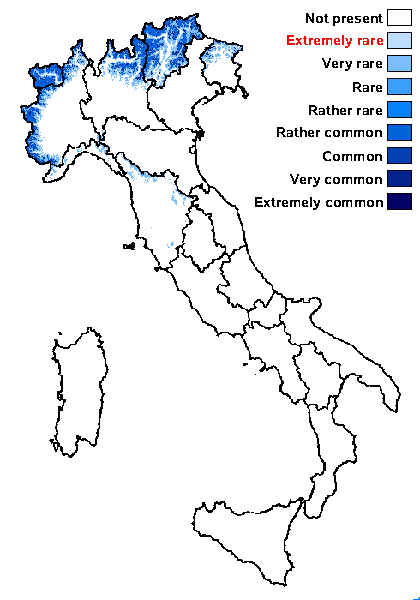
Predictive model
Herbarium samples
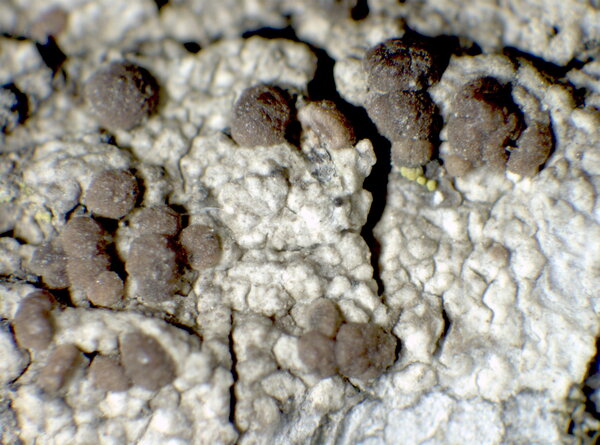

P.L. Nimis; Owner: Department of Life Sciences, University of Trieste
Herbarium: TSB (34659)
2002/01/31
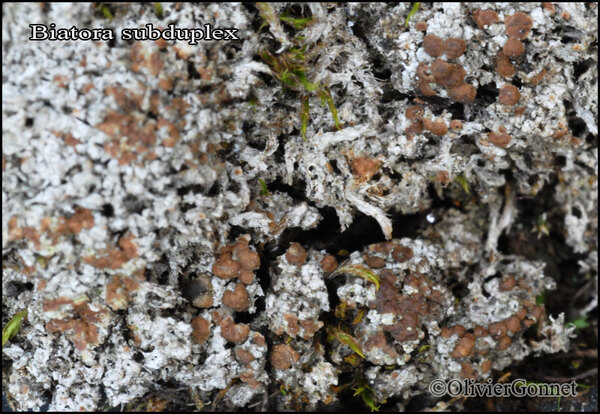
Courtesy: Olivier et Danièle Gonnet - Source: https://www.afl-lichenologie.fr/Photos_AFL/Photos_AFL_B/Textes_B2/Biatora_subduplex.htm
France, Chamonix-Mont-Blanc : tête de Balme, alt. 2321 m - Savoie - (73) - sur débris de mousse, herb. et dét. D. et O. Gonnet
24/8/2014

Courtesy: Olivier et Danièle Gonnet - Source: https://www.afl-lichenologie.fr/Photos_AFL/Photos_AFL_B/Textes_B2/Biatora_subduplex.htm
France, Chamonix-Mont-Blanc : tête de Balme, alt. 2321 m - Savoie - (73) - sur débris de mousse, herb. et dét. D. et O. Gonnet
24/8/2014

Courtesy: Olivier et Danièle Gonnet - Source: https://www.afl-lichenologie.fr/Photos_AFL/Photos_AFL_B/Textes_B2/Biatora_subduplex.htm
France, Chamonix-Mont-Blanc : tête de Balme, alt. 2321 m - Savoie - (73) - sur débris de mousse, herb. et dét. D. et O. Gonnet
24/8/2014

Courtesy: Olivier et Danièle Gonnet - Source: https://www.afl-lichenologie.fr/Photos_AFL/Photos_AFL_B/Textes_B2/Biatora_subduplex.htm
France, Chamonix-Mont-Blanc : tête de Balme, alt. 2321 m - Savoie - (73) - sur débris de mousse, herb. et dét. D. et O. Gonnet
24/8/2014
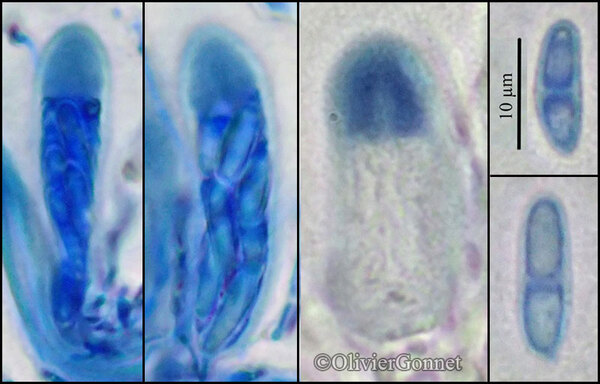
Courtesy: Olivier et Danièle Gonnet - Source: https://www.afl-lichenologie.fr/Photos_AFL/Photos_AFL_B/Textes_B2/Biatora_subduplex.htm
France, Col du Petit Mont-Cenis, alt. 2200 m
25/8/2018
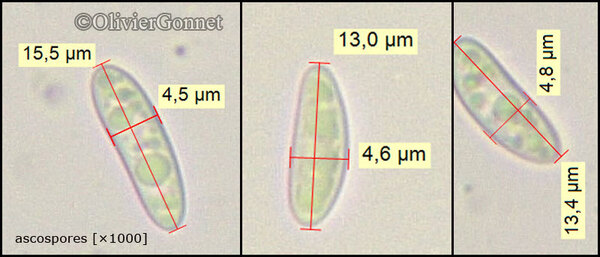
Courtesy: Olivier et Danièle Gonnet - Source: https://www.afl-lichenologie.fr/Photos_AFL/Photos_AFL_B/Textes_B2/Biatora_subduplex.htm
France, Col du Petit Mont-Cenis, alt. 2200 m
25/8/2018

Courtesy: Olivier et Danièle Gonnet - Source: https://www.afl-lichenologie.fr/Photos_AFL/Photos_AFL_B/Textes_B2/Biatora_subduplex.htm
France, Col du Petit Mont-Cenis, alt. 2200 m
25/8/2018


Felix Schumm - CC BY-SA 4.0
[VZR112], Austria. Tirolia merid., Oetztaler Alpen, Oetztal, secus viam
montanam inter jugum "Hohe Mut" et "Liebenerspitze" et vallem
"Gaisbergtal, 2400-2700 m. Ad terram humosam. Leg. A. Vezda & F.
Ceni, 2.9.1993, rev. Z. Palice - (primum sub Biatora vernalis (L.) Fr.
edita). EX A. VEZDA: LICHENES RARIORES EXSICCATI NR. 112.


Felix Schumm - CC BY-SA 4.0
[VZR112], Austria. Tirolia merid., Oetztaler Alpen, Oetztal, secus viam
montanam inter jugum "Hohe Mut" et "Liebenerspitze" et vallem
"Gaisbergtal, 2400-2700 m. Ad terram humosam. Leg. A. Vezda & F.
Ceni, 2.9.1993, rev. Z. Palice - (primum sub Biatora vernalis (L.) Fr.
edita). EX A. VEZDA: LICHENES RARIORES EXSICCATI NR. 112.
Growth form: Crustose
Substrata: bark, soil, terricolous mosses, and plant debris
Photobiont: green algae other than Trentepohlia
Reproductive strategy: mainly sexual
Commonnes-rarity: (info)
Alpine belt: rather common
Subalpine belt: very common
Oromediterranean belt: absent
Montane belt: very rare
Submediterranean belt: absent
Padanian area: absent
Humid submediterranean belt: absent
Humid mediterranean belt: absent
Dry mediterranean belt: absent

Predictive model
| Herbarium samples |


P.L. Nimis; Owner: Department of Life Sciences, University of Trieste
Herbarium: TSB (34659)
2002/01/31

Courtesy: Olivier et Danièle Gonnet - Source: https://www.afl-lichenologie.fr/Photos_AFL/Photos_AFL_B/Textes_B2/Biatora_subduplex.htm
France, Chamonix-Mont-Blanc : tête de Balme, alt. 2321 m - Savoie - (73) - sur débris de mousse, herb. et dét. D. et O. Gonnet
24/8/2014

Courtesy: Olivier et Danièle Gonnet - Source: https://www.afl-lichenologie.fr/Photos_AFL/Photos_AFL_B/Textes_B2/Biatora_subduplex.htm
France, Chamonix-Mont-Blanc : tête de Balme, alt. 2321 m - Savoie - (73) - sur débris de mousse, herb. et dét. D. et O. Gonnet
24/8/2014

Courtesy: Olivier et Danièle Gonnet - Source: https://www.afl-lichenologie.fr/Photos_AFL/Photos_AFL_B/Textes_B2/Biatora_subduplex.htm
France, Chamonix-Mont-Blanc : tête de Balme, alt. 2321 m - Savoie - (73) - sur débris de mousse, herb. et dét. D. et O. Gonnet
24/8/2014

Courtesy: Olivier et Danièle Gonnet - Source: https://www.afl-lichenologie.fr/Photos_AFL/Photos_AFL_B/Textes_B2/Biatora_subduplex.htm
France, Chamonix-Mont-Blanc : tête de Balme, alt. 2321 m - Savoie - (73) - sur débris de mousse, herb. et dét. D. et O. Gonnet
24/8/2014

Courtesy: Olivier et Danièle Gonnet - Source: https://www.afl-lichenologie.fr/Photos_AFL/Photos_AFL_B/Textes_B2/Biatora_subduplex.htm
France, Col du Petit Mont-Cenis, alt. 2200 m
25/8/2018

Courtesy: Olivier et Danièle Gonnet - Source: https://www.afl-lichenologie.fr/Photos_AFL/Photos_AFL_B/Textes_B2/Biatora_subduplex.htm
France, Col du Petit Mont-Cenis, alt. 2200 m
25/8/2018

Courtesy: Olivier et Danièle Gonnet - Source: https://www.afl-lichenologie.fr/Photos_AFL/Photos_AFL_B/Textes_B2/Biatora_subduplex.htm
France, Col du Petit Mont-Cenis, alt. 2200 m
25/8/2018


Felix Schumm - CC BY-SA 4.0
[VZR112], Austria. Tirolia merid., Oetztaler Alpen, Oetztal, secus viam montanam inter jugum "Hohe Mut" et "Liebenerspitze" et vallem "Gaisbergtal, 2400-2700 m. Ad terram humosam. Leg. A. Vezda & F. Ceni, 2.9.1993, rev. Z. Palice - (primum sub Biatora vernalis (L.) Fr. edita). EX A. VEZDA: LICHENES RARIORES EXSICCATI NR. 112.


 INDEX FUNGORUM
INDEX FUNGORUM
 GBIF
GBIF
 DOLICHENS
DOLICHENS
